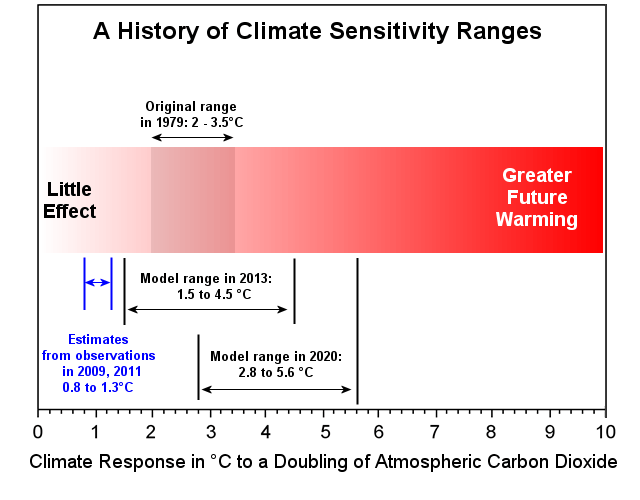From the Friends of Science Society Newsletter, where they give our own Willis Eschenbach props and suggestions for his important recent work – Anthony
The Clouds and the Earth’s Radiant Energy System (CERES) project provides satellite-based observations of Earth’s radiation budget and clouds. CERES instruments on several satellites measure longwave and shortwave radiation from the Earth. The longwave radiation is the radiation emitted upward to space from the Earth’s surface and clouds. The upward shortwave radiation is the reflected solar radiation which doesn’t enter the climate system. If the outgoing longwave radiation is less than the absorbed solar radiation, there is a positive top-of-atmosphere radiative imbalance (imbalance) which increases the global average temperature.
Willis Eschenbach used the CERES database, which gives the monthly radiative fluxes in each 1° latitude by 1° longitude starting March 2000, to calculate the equilibrium climate sensitivity (ECS) to greenhouse gases. He produced a graph of imbalance versus the surface temperature by 1° latitude by 1° longitude with time averaged over 24 years. Eschenbach applied a lowess fit to the data. He calculated the slope of that fit and calculated the area weighted imbalance per degree of temperature change. Eschenbach asks “How much does the earth have to warm up to restore the 3.7 watts per square meter (W/m2) of TOA radiation imbalance that is said to result from a doubling of CO2 (2xCO2)?” Willis says the amount of warming required to rebalance the imbalance is called the ECS, but I believe that isn’t correct. The imbalance is not at an equilibrium state but is the result of a continual increase of greenhouse gases.
The transient climate response (TCR) is the change in temperature after a doubling of CO2 at a constant increase of a 1%/year, which would result in a doubling in 70 years. The actual average CO2 increase from 2000 to 2024 was 0.567%/year. Willis calculates the imbalance at 6.6 W/m2 per °C of surface temperature change. This equates to a TCR 3.7/6.6 = 0.56 °C, which is the TCR at 0.567%/year CO2 increase. I call this the “slowTCR”, to distinguish it from the normal TCR with a 1%/yr CO2 increase. Using a simple 1-D climate model tuned to 3-D models, with CO2 increasing at the actual rate, I calculated that the slowTCR of 0.56 °C corresponds to an ECS of 0.68 °C, which seem much too low compared to other observation-based estimates.
I did a similar calculation using the same CERES data. Each data point is 1° latitude by 4° longitude. I applied a 4th-order polynomial fit to the average 25-year data (16200 data points) as shown in this graph. I made another graph of the slope of the fitted curve and calculated a global average imbalance of 3.95 W/m2 per °C of surface temperature change, which corresponding to a slowTRC of 0.94 °C and an ECS of 1.14 °C. The lowess fit heavily discounts data further away from the mean to discount outliers. The polynomial fit might be better as all the data is of equally high quality. Changing the best fit method has a large effect on the results.
Several papers, see here and , here, argue that cloud cover can change due to atmospheric circulation changes caused by a temperature change. The analysis by Eschenbach and myself using time average CERIS data doesn’t account for this possible effect and assumes that any potential temperature-caused air circulation changes will not significantly change the relationship between imbalance and temperature over the next few decades of climate change. Therefore, I did the same calculation using the four coldest years of the CERES data (2000, 2001,2008, 2011) and the four warmest years (2018, 2019,2023, 2024). The global average temperature difference between these year groups is 0.68 °C. If the air circulation changes were causing more warming, the result of the warm years would show a lower imbalance change per temperature change than the cold years. In fact, the warm years analysis has a slightly smaller change of 0.13 W/m2/°C, so it appears that this effect is leading to more warming. Therefore, the method we used to estimate ECS is likely inaccurate. It is not a simple task to estimate the ECS.
Related
Discover more from Watts Up With That?
Subscribe to get the latest posts sent to your email.
